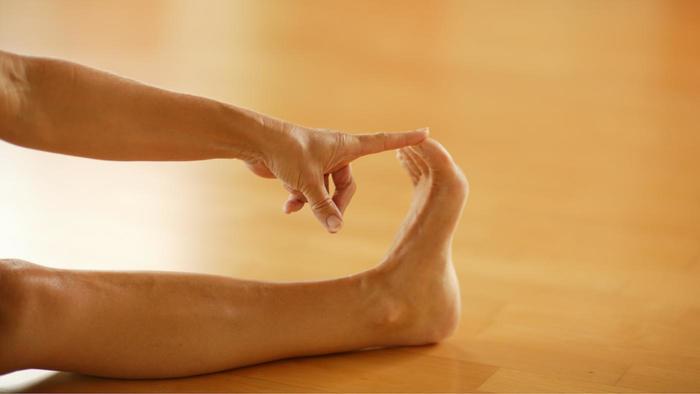
This is a question I ask often when I see idle feet, just lying around, not doing their part. I like to think that they know that I mean that yoga poses usually require the whole body get involved and even the tiniest body part has a role to play to bring about the “ease and steadiness” to the pose. Therefore, being more present in the pose will facilitate this ease and steadiness. Or. maybe, they just think that I am weird!
In my experience, yoga asana is more mental than physical. Whilst it is certainly possible to bend a knee without thinking too much about it, what makes yoga yoga is the fact that we pay attention, not to perfect the pose, but to observe and notice how it feels to be in the pose. The ultimate objective of asana is said to be to prepare the body to train the attention. Some would say that this should/can only be done in a sit-down meditation but I beg to differ, there is no reason why we shouldn’t train the attention to be more present in yoga asana and actually and sincerely mean to practice.
The following quote by Ray Long is an example of how our little big-toes go a long way to support our largest muscle, gluteus maximus:
… So how does the anatomy work? Muscles in your big toes support the ligaments and bones that make up your arches. Healthy arches (as opposed to fallen ones) act like shock absorbers, transmitting kinetic forces, or the forces of motion, up through the ankles to the knees and up the kinetic chain of the body, potentially causing issues with alignment, joint health, and muscle strength. For example, weak big-toe flexors, the muscles that bend the toe, may change the strength and effectiveness of your largest glute muscle, gluteus maximus. And the glute max is critical in supporting most poses. For the big-toe muscles to do their job well, protecting your body from impact and instability, they need to be dynamically stable, meaning they should respond to shifts in movement, weight, and balance. … * – Ray Long (M.D) full article
Big toes are important but other toes, too. So, next time instead of looking at the chipped nail polish on your toes or trying to carry your weight with your hands in phalankasana, put your toes to work and observe how that feels. 🙂
Namaste,
e.



